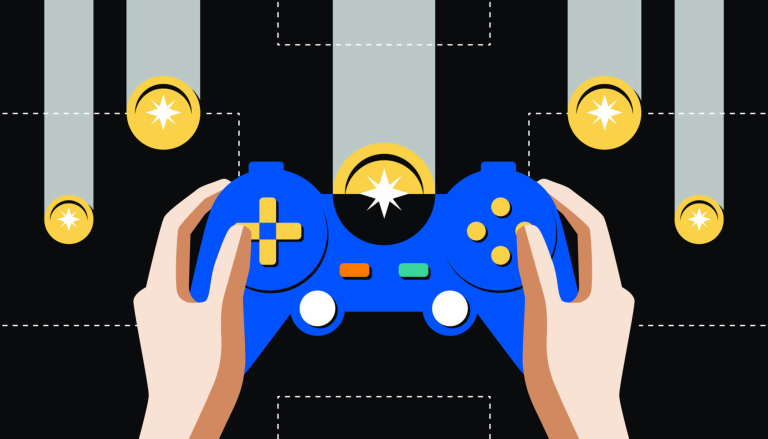What is GameFi?

GameFi, or game finance, is a fusion of online gaming and decentralized finance, creating an in-game economy.
It introduces the concept of play-to-earn (P2E), where in-game activity may provide the player with digital assets, rare items, and more.
Blockchain technology and non-fungible tokens (NFTs) aim to give players sole ownership in GameFi, and players may receive digital tokens while playing.
What is GameFi?
GameFi, short for gaming finance, is a relatively new concept that combines elements of gaming and decentralized finance. It represents a new category of decentralized applications (dApps) that strives to merge the gaming and blockchain worlds. By creating a gaming ecosystem that utilizes blockchain technology, digital assets, and decentralized finance, GameFi aims to improve player experience and provide opportunities for compensation.
How does GameFi work?
The core idea behind GameFi is to provide players with ways to receive token rewards and assets for gaming achievements and skills. GameFi has been the catalyst behind a new subset of gaming experiences commonly referred to as play-to-earn games. These games provide various forms of rewards, including digital tokens and in-game assets such as virtual land, avatars, weapons, and costumes. Each project operates with a unique model and economy. Most commonly, the in-game assets are non-fungible tokens (NFTs) that run on the blockchain and can be traded on NFT marketplaces.
The Role of Blockchain Technology in GameFi
Blockchain technology plays a crucial role in GameFi. It powers the games and the in-game tokens. Smart contracts also play a role, helping to decentralize much of the online gaming experience. Decentralized finance, non-fungible tokens, and play-to-earn mechanisms contribute to the functionality of GameFi. Blockchain games aim to provide open in-game economies with sovereign ownership over digital items and currencies.
The Pros and Cons of GameFi
There are advantages and disadvantages to GameFi’s emergence. On the positive side, P2E is an alternative to the traditional pay-to-play models of earlier video games. It gives way to more earning opportunities by simply engaging in blockchain games. It could potentially encourage more industry involvement, potentially leading to increased adoption. NFTs are a way to promote virtual asset ownership without control by centralized entities. On the other hand, there are challenges such as the need for a balanced economy and the risk of market volatility.
The Future of GameFi
Given the current size of the industry, market forecasts suggest potential growth in the coming years. There is a possibility that the industry could reach over $100B, potentially contributing to the growth of DeFi, NFTs, the metaverse, and more. As the supply and demand for the gaming token scale, the platform may experience network effects. This initiates a self-reinforcing cycle and could be identified as a functional GameFi ecosystem.


